(Sponsored Video)
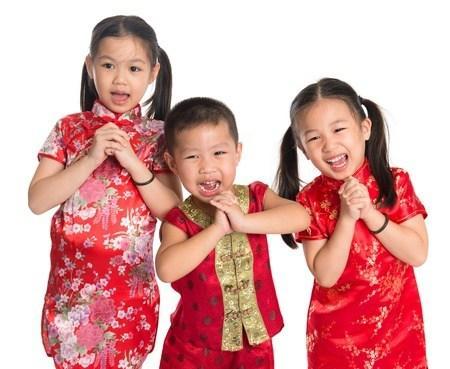
The other day, my gorgeous little niece asked for some information to give her teacher about Chinese New Year. He wanted to talk to the class about it. Much to my surprise, my Hong Kong-born Small Person rattled off a list of things she has come to know and clearly love about CNY.
The lettuce that hangs from every door–way seemed to be a prominent feature in her mind. Called Cai Qing or “plucking of the greens” – the lion feverishly dances his way to the front of every business, every shop front and every office, dangling the green leafy veg, tied with a red envelope of money and gobbles it up before spitting the lettuce back out (but not the money) — all in the name of good fortune!
It’s no surprise this features as one of her more notable memories. Every year in China and particularly Hong Kong, you can hear the sound of the Lion coming. As he gets closer and closer….the cymbals clanging, the drums banging louder and louder with a sense of urgency and excitement!
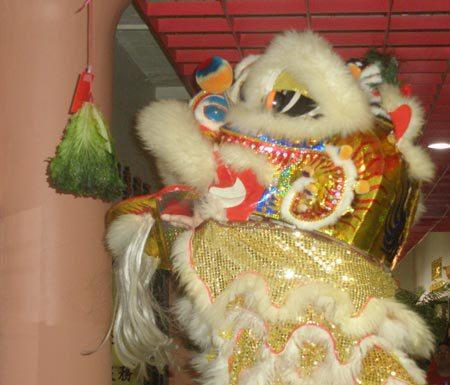
Of course it got me thinking about how having never lived out of Asia, to my now five year old, these age-old yearly traditions will be ingrained in her childhood memory bank.
If you live in China it’s hard to miss (chūnjié, 春节) otherwise known as Spring Festival or to the average Westerner, ‘Chinese New Year’ – which begins every February on the first day of the Lunar New Year (Nong Li).
To my Small Person, eating 饺子 Jiǎozi over Chinese New Year is probably more natural than throwing a sausage on the barbie for Australia Day.
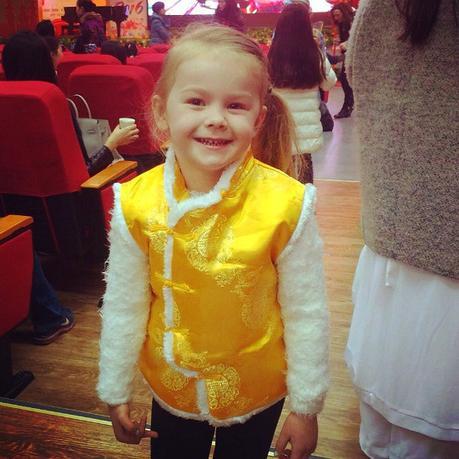
Jiǎozi are of course, dumplings and while these tasty morsels are a year ’round staple in these parts – during Spring Festival they are particularly auspicious. Their crescent moon shape similar to China’s gold ingots used in the Ming Dynasty, symbolising prosperity for the year ahead.
And who can forget the fire crackers! The Small Person’s eyes light up at the thought of these loud explosions livening up the streets! Come midnight, “Bian Pao” are launched in a cacophony of ear splitting eruptions, to scare off evil spirits (or just to make noise — sleeping is optional) and in northern China, this continues for much of the two week holiday, in backyards on footpaths and in any un-used space, day and night! It’s a fire cracker frenzy!
It seems the monster Nián is to blame…. if you’ve been to school in China, you’ve no doubt heard about this legendary fella! My Small Person tells me he “flies through the sky when he hears firecrackers.” She’s not too far off the mark.
As legend goes, every Spring, during New Years Eve, Nián would come out to eat villagers, destroy their homes and farms.
One such story tells of the villagers and their plan to use drums, plates and empty bowls to make as much noise as possible, they wore red robes and threw firecrackers to intimidate the monster! According to myth, it worked and Nian never appeared in the village again.
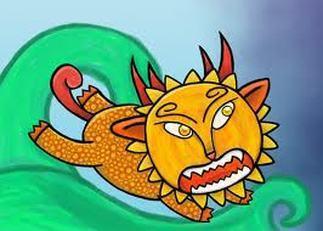
Of course in the lead up to the Spring Festival, it’s all about “Out with the old, in with the new!” Houses are frantically cleaned before the big holiday (cleaning after is simply a big no no). New clothes are purchased – preferably red (undies and all!) and the decorations go up! The ubiquitous red lanterns dangle in the breeze, down every laneway, along every street, in every tree; the red paper cut-outs visible on windows and the customary well-wishing red banners are draped around the doorways!
And of course for the little ones it wouldn’t be Chinese New Year without the songs!
Across China and much of Asia, for the last week, concerts rang out with small people dressed in Chinese traditional costumes, singing to their heart’s content.
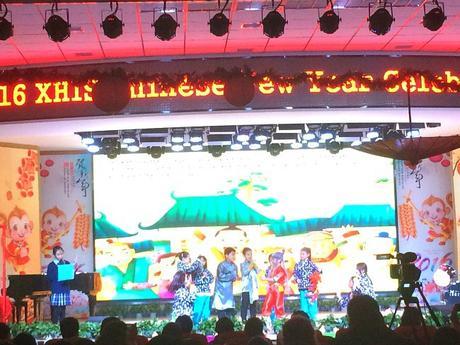
The big people don’t miss out either, including the hotelier who, this year, heaven forbid, was dressed as a beautiful(?) Chinese woman for his staff CNY concert!
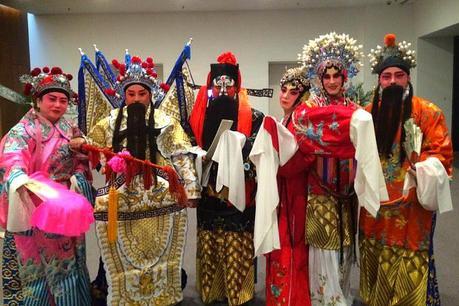
So, while (clearly) us foreigners (big and small) like to get into the spirit and enjoy the celebrations that come with this ancient Chinese festival, for the locals it’s undeniably bigger than big!
With the government advocating a seven day holiday, you may have seen my earlier post about 100 million locals taking to the streets...all in the name of travel, rushing to get home for the big family reunion.
In China, family is the backbone of society.
Trivial Fact: The character for family “家” is made up of two key elements: an upper part that represents a roof and a lower part which represents a pig – which if you look sideways you might just get. 😉 Thousands of years ago pigs were domesticated and lived inside! Thus if there’s a pig inside, it indicates people live in the house.
With grandparents everywhere often tasked with the role of primary carer for the children, many parents our of town for work purposes Spring Festival is often the one time of the year the whole family can get together.
There’s even a popular Chinese saying: “falling leaves returning to the root of the tree that sired them.”

On the family dinner table, a plethora of ‘lucky’ food is served, including Apples because the Chinese name for apple is 苹果; píngguǒ and Ping also means peace; fish which is known as 鱼 Yú which sounds like another word for abundance, to dumplings and spring rolls 春卷 Chūnjuǎn, which seemingly look like gold bars so symbolise wealth, not to mention 汤圆 Tāngyuán — Sweet Rice Balls — the pronunciation and round shape of tangyuan associated with reunion and being together.
After the dinner, the whole family usually sit down to watch China’s national television. Almost every single channel shows the same Spring Festival party of entertainment. A bit like western New Year’s Eve, everyone will stay up to see the New Year in.
Probably one of the most exciting things for children across China, is receiving the lucky red envelopes! Of which they are the prime recipients!
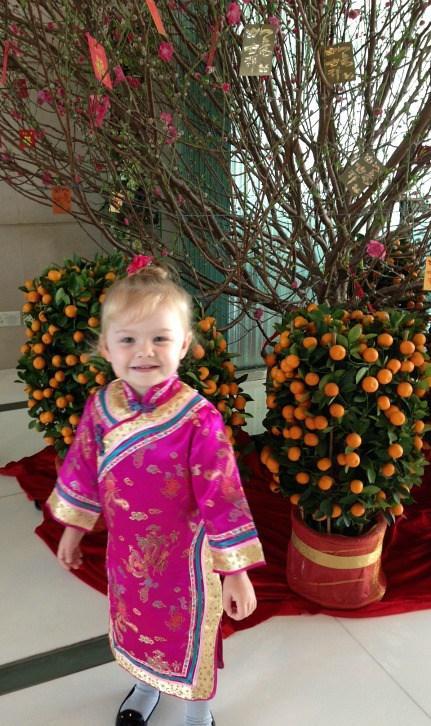
The Red envelopes for children are called Yāsuìqián which means “suppressing age money” or keeping them young and suppressing the ghosts and warding off evil spirits. The envelopes themselves hold more meaning than the actual money inside them (although perhaps not for the kids)! 😉 They’re called Lai See down south and Hongbao up north, but the concept is the same. Those who receive a red packet are wished a year of ‘good health, safety and peace’.
Dating back to the Qing Dynasty, the elderly would thread coins with a red string and put them under their children’s pillows when they fell asleep on New Year’s Eve — today, while the tradition has been replaced with red envelopes, parents (including us) still put Hongbao under their children’s pillows!
It’s also customary to give these lucky packets to any children close to you, that you come into contact with over the Spring Festival.
And in the past, children had to give their red packets to their parents for safe keeping, today……it’s a little bit like Christmas! Oh and it’s also bad luck for the family if a child cries during Spring Festival, so cheeky kids will probably get off more lightly than usual! 😉 Even more fun!
And finally, on the fifteenth day — the Lantern Festival signals the end of Chinese New Year. As the first night of the full moon, children go out at night to temples carrying red paper lanterns and solve riddles on the lanterns. The delicate paper lamps are lit and sent sailing skyward…. paving the way for a smooth year ahead.
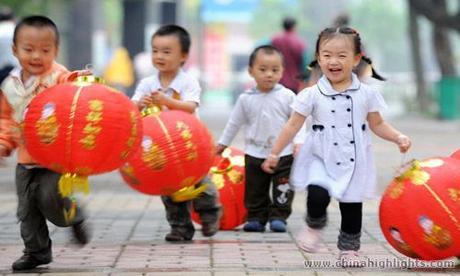
From me to you, in Mandarin it’s a big Gong Xi Fa Cai or in Cantonese it’s Kung Hei Fat Choi!
Wishing you a joyful and prosperous year!
Happy New Year of the Monkey!
The above video has been provided by Lego, but all thoughts and fun facts are my own and in my humble opinion well worth telling you about! 😆
Pssst…. here’s a list of other articles I’ve written on Chinese New Year…..
Monkey Business: Swinging into the Chinese New Year with a Bang
Chinese New Year in Xi’an: IN VIDEO
Bask in the Glow: Chinese New Year in Pictures
Lai See: Lucky Money or Tradition Gone Mad
Out with the Old, in With the New

